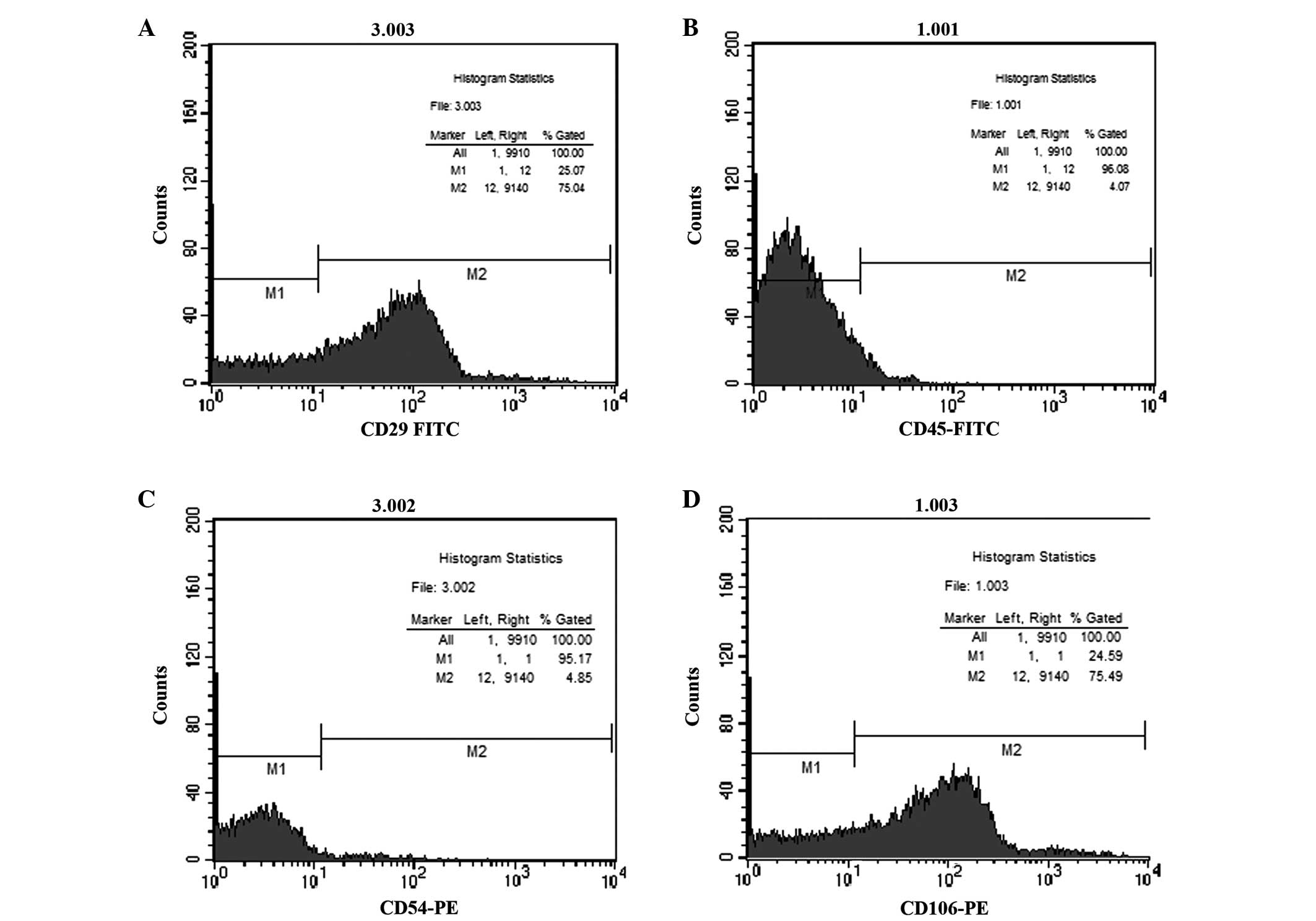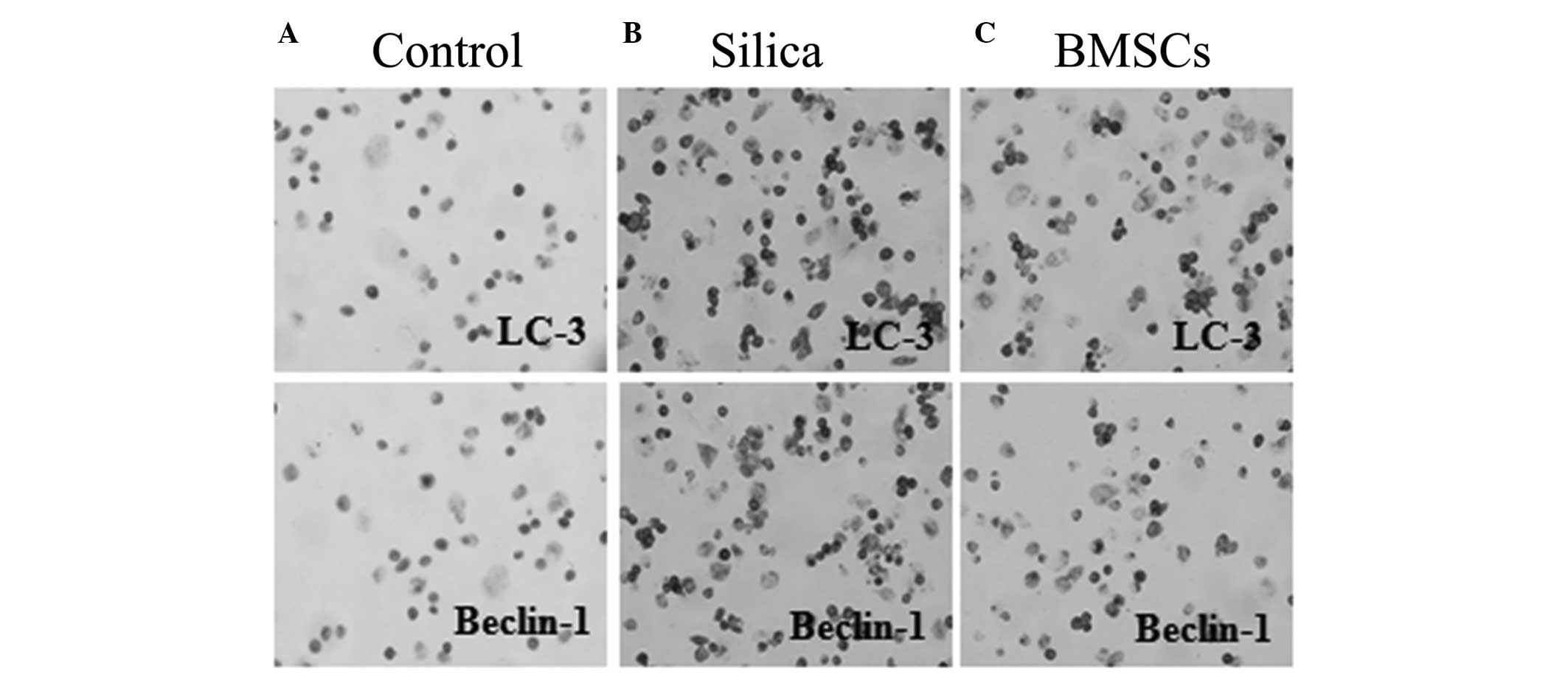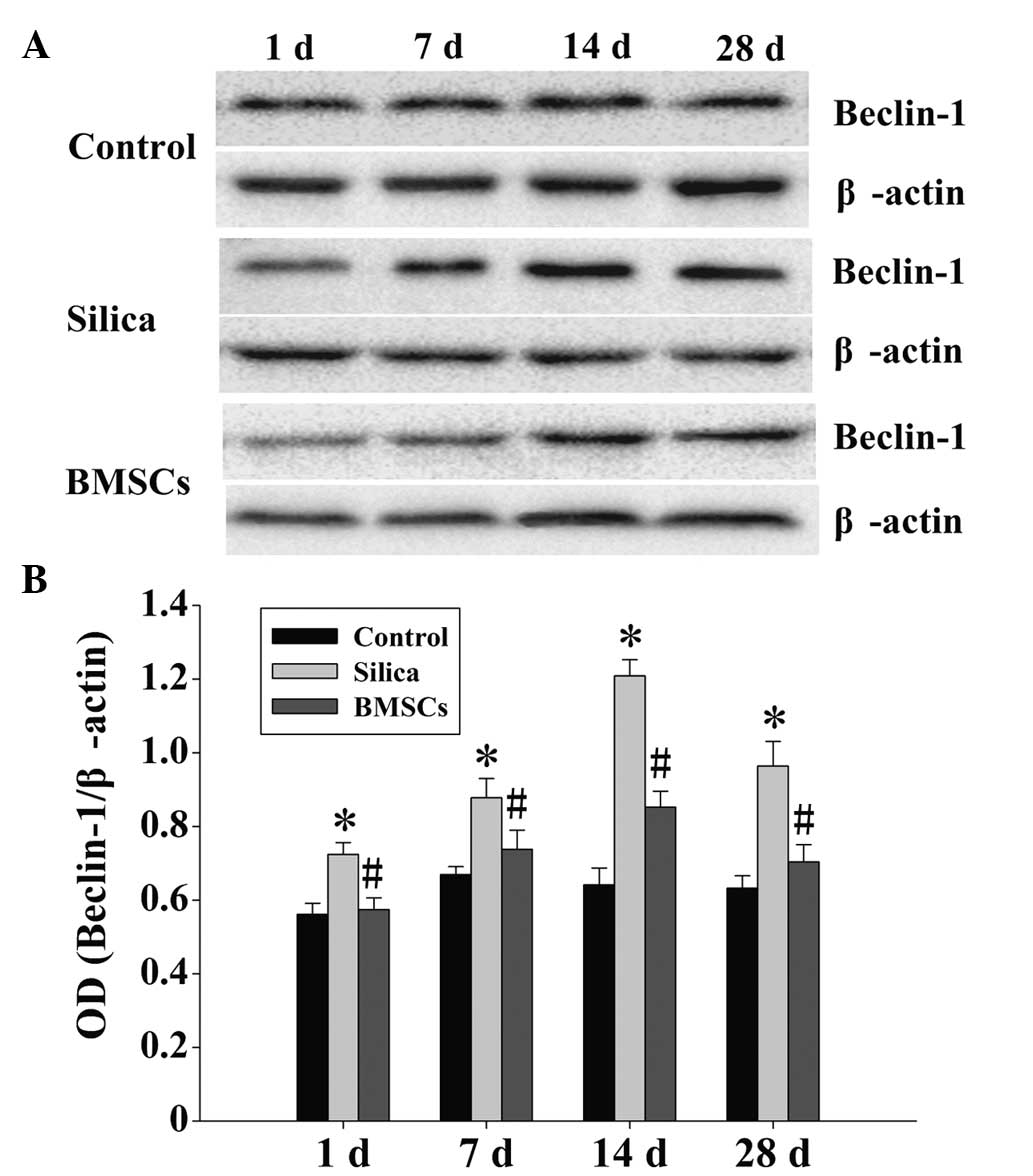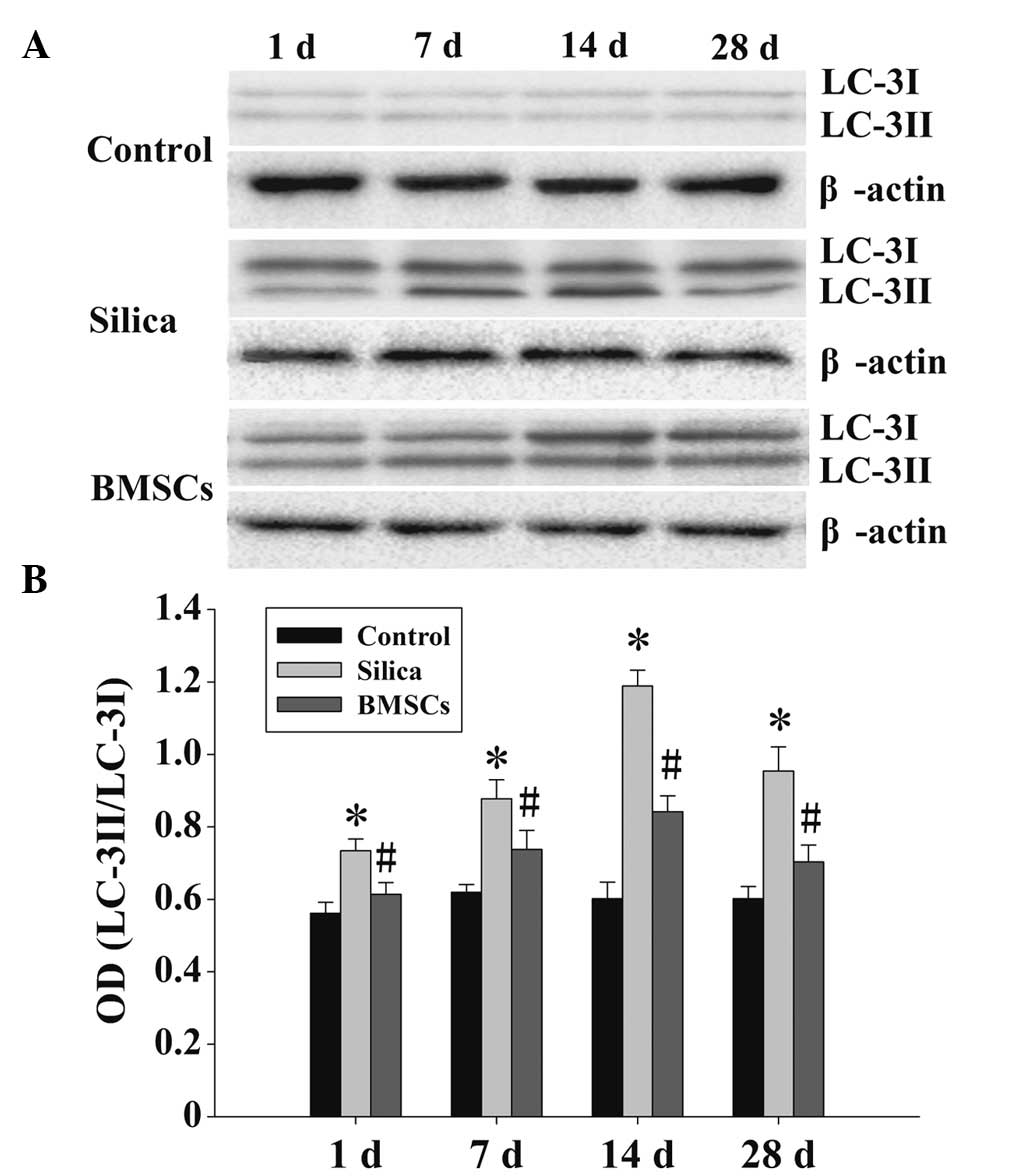Effects of bone marrow‑derived mesenchymal stem cells on the autophagic activity of alveolar macrophages in a rat model of silicosis
- Authors:
- Published online on: March 29, 2016 https://doi.org/10.3892/etm.2016.3200
- Pages: 2577-2582
Metrics: Total
Views: 0 (Spandidos Publications: | PMC Statistics: )
Total PDF Downloads: 0 (Spandidos Publications: | PMC Statistics: )
Abstract
The aim of the present study was to evaluate the effects of bone marrow‑derived mesenchymal stem cells (BMSCs) on the expression of the autophagy‑associated proteins, microtubule‑associated protein light chain 3 (LC‑3) and autophagy‑related gene Beclin‑1 (Beclin‑1), in alveolar macrophages (AMs) in a rat model of silicosis. Furthermore, the study investigated the molecular mechanisms underlying the effects of BMSC treatment. A population of 60 adult female Sprague‑Dawley (SD) rats were allocated at random into three groups, namely the control, model and BMSC treatment groups (n=20 per group). BMSCs were isolated from five male SD rats (age, 6‑8 weeks) and cultured in vitro. The silicosis model was established using a single 1.0‑ml infusion of silicon dioxide suspension administered via non‑exposed tracheal intubation. Rats in the BMSC treatment group received a 1.0‑ml transplantation of BMSCs (1x106/ml). The rats were sacrificed on days 1, 7, 14 and 28 after modeling, and AMs were extracted from the rats using bronchoalveolar lavage. Third‑generation BMSCs were identified using flow cytometry with fluorescein isothiocyanate staining, and the morphological characteristics of the AMs were observed using hematoxylin and eosin staining. The expression levels of LC‑3 and Beclin‑1 were determined using immunocytochemistry sand western blot analysis. The expression levels of LC‑3 and Beclin‑1 were found to be increased at all the time points in the model group. LC‑3 and Beclin‑1 levels began to increase at day 1, peaked at day 14 and decreased after day 28; however, the levels remained elevated compared with the basal expression levels. The AMs of the BMSC treatment group exhibited significantly alleviated pathological symptoms compared with the model group AMs, as indicated by significantly decreased expression levels of LC‑3 and Beclin‑1 at each time point. Therefore, the results indicated that autophagy was promoted in the AMs of the silicosis model rats. Furthermore, treatment with BMSCs was demonstrated to reduce the expression levels of LC‑3 and Beclin‑1, subsequently inhibiting autophagic activity and mitigating the damage associated with silicosis.














